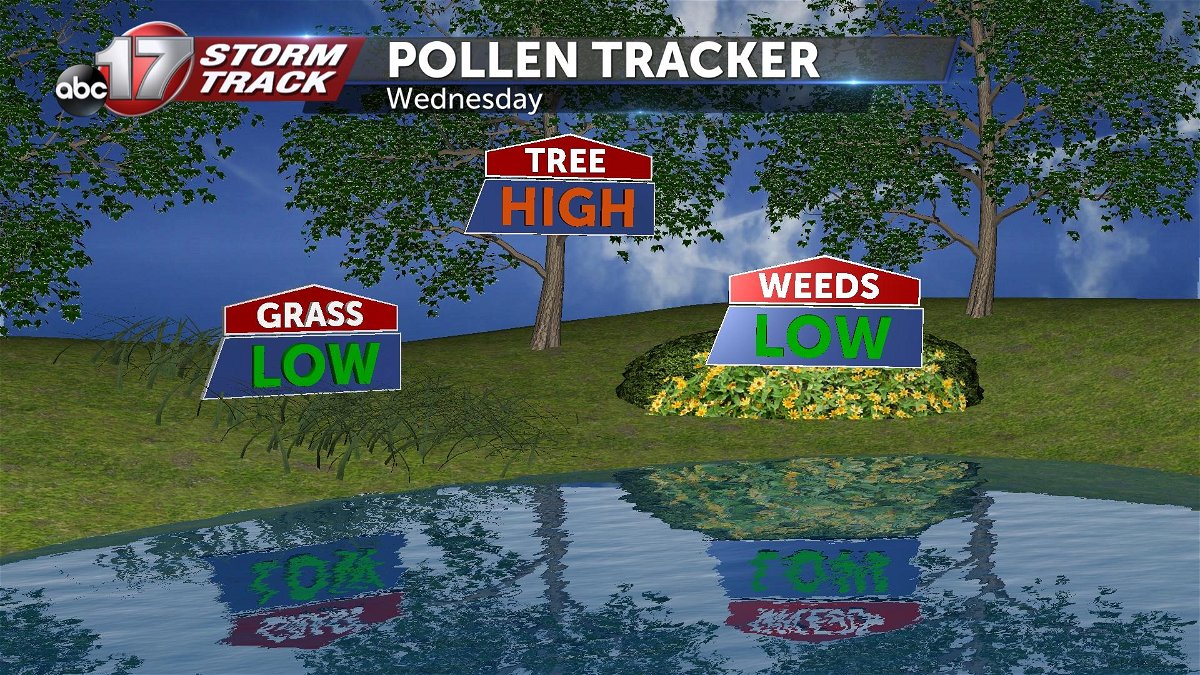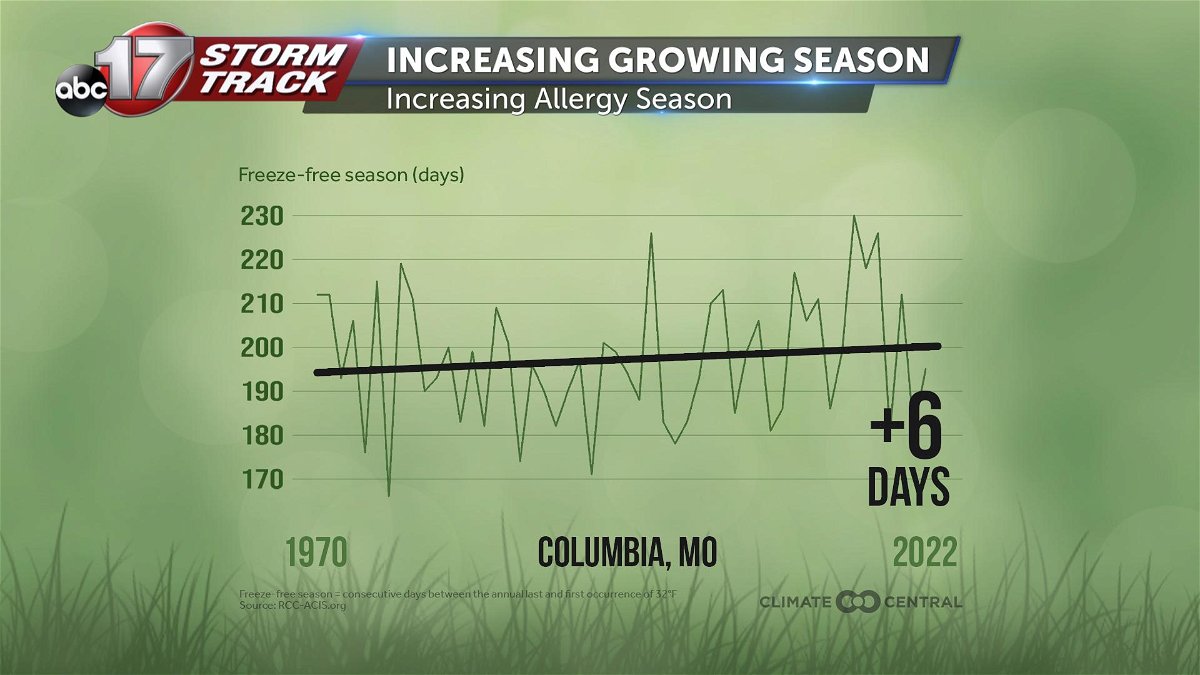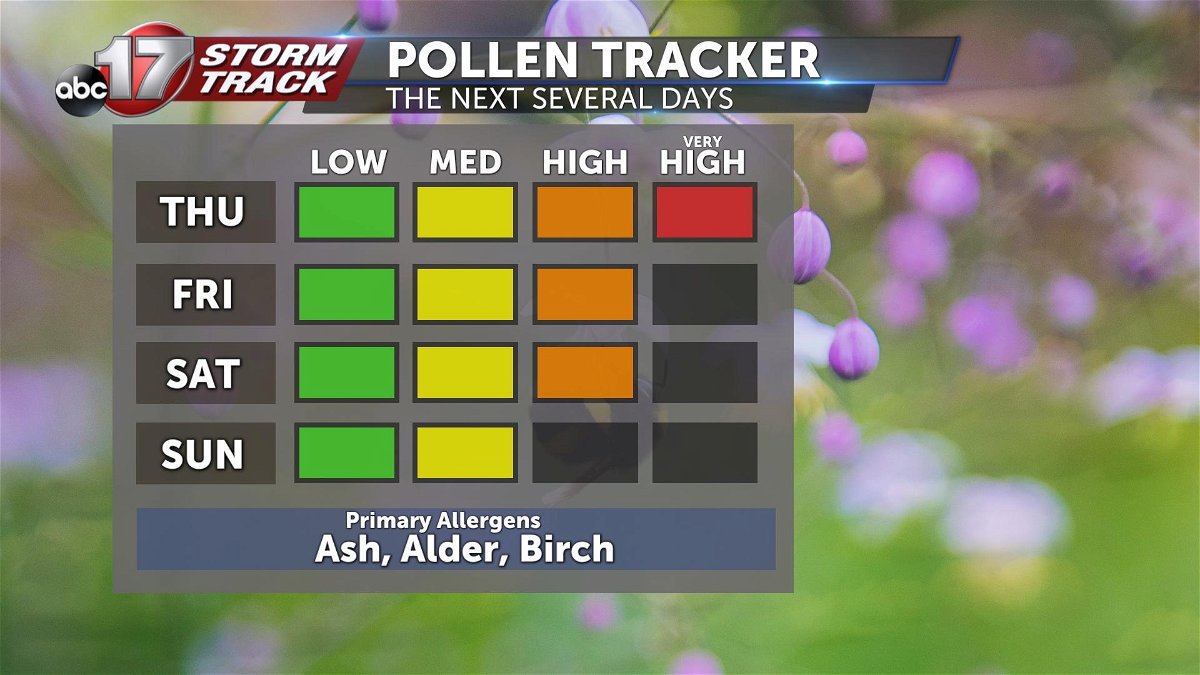Tracking how the weather influences allergens
Mid-Missouri has seen an increase in temperatures across the region as winds pick up out of the south. Temperatures aren't the only increase in conditions being felt, pollen levels have been on the rise. The last several mornings, a thin layer of pollen has covered many surfaces marking the peak of springs allergen season.

The main allergen being seen across Missouri currently is tree pollen. This is very common for spring in Mid-Missouri as tree pollen is always higher during the months of March-May. This relation correlates to the earlier portions of the growing season.

With increases in the climatological average temperatures for Mid-Missouri over the past 50 years, the growing season has seen an increase in days. This is due in large part of less days seeing at or below freezing temperatures which can harm tree growth or slow it down. More days of growth means more days of increased pollen effecting those with sensitivities to tree pollen.

The next several days sees higher level of pollens due to the current conditions. Typically, warmer, dry, and windier days result in elevated counts due to the atmospheres ability to carry pollen stimuli. As Mid-Missouri heads towards the weekend, pollen levels look to decrease due to a cold fronts arrival Thursday afternoon. Rain, and cooler temperatures remain likely stunting the atmospheres ability to spread pollen.
When dealing with pollen on a daily bases, typically the afternoon sees the highest levels of pollen counts.
Thunderstorm events during the spring months have also been linked in correlation to spikes in emergency room visits for asthma attacks. According to a review paper published in the World Allergy Organization Journal, updrafts from storms can carry grains which can rupture and release allergy inducing starch granules.
